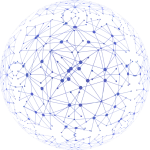
In my previous article, I have talked about some of the facts that you need to know about how to handle web hosting for e-commerce websites. In this article, I want to look at some of the methods of data collection for web analytics. Follow me as we are going to look at that together in this article.
In summary, there are some methods that are used for data collection. Some of them include Page Tagging, log file analysis, cookies and packet sniffing. When using log file analysis, log files are created whenever you use a file. Cookies store session information and session files.
Also, in page tagging and web session, each web page in the website is inserted with small pieces of Javascript code that records the user activity on an internal server. Packet sniffing captures the data that passes between a web server and other sources.
Now the collection methods…
#1 Logfile Analysis
here, whenever a user visits your site or performs an action, the web server will record all the information in the log. Also, some of the information collected in the log include:
- Total number of visitors
- Visit date/durations
- Geographical locations/IP Address
We log analysis tools are used to analyse the information obtained from the web server log files. this will help in tracking the visitors’ activity in the form of a hit count such as:
- Viewed HTML document
- Clicked on an image or object on your website.
The hit count and log file information aid in finding the status of a website.
Pros
- Cheaper
- Raw data is readily available, as the log file are produced by the webserver.
- Track search engine spiders
- Track failed requests
- Track non HTML pages
Cons
- Less accurate
- Requires the server to assign cookies
- Cannot collect information from the webserver
- Modify URL to record the information
- A lot of traffic has to be eliminated.
#2 Cookies
Also, website owners can measure the number of visitors, as well as unique visitors to their websites with the help of cookies. Also, web analytics software creates two types of cookies in the computer system. This happens whenever a user visits a website. The two types of cookies created are:
a. Transient cookies
Whenever a visitor visits a website, it stores cookies on the visitor’s computer. These types of cookies are deleted once the visitor leaves such a website. Because they are not permanent, they are referred to as Transient cookies.
b. Persistent cookies
Whenever a visitor visits a website, it stores cookies that remain in their browser until they are removed by the visitor. These are referred to as persistent cookies.
Other types of cookies used in measuring web analytics include:
a. First party cookies
Whenever a visitor visits a website, first-party cookies are loaded on their system.
b. Third-party cookies
Whenever a visitor visits a website, cookies of other websites contained in banner ads, links, images, videos among others are stored on the visitor’s computer.
Also, the Ad network places cookies on computers that visit their advertised sites and also tracked visitors behaviour on that site. Also, information gathered from such visitors is used in placing targeted ads. Also, web analytics software uses first-party cookies instead of third party cookies due to some laws regarding privacy concerns.
#3 Page Tagging
With Page Tagging, javascript is used to send visitors’ activity to a tracking server. When a user visits a website, a request is sent to the webserver hosting the website. The host server then responds by sending the website content including the Javascript tracking code.
Also, when the site loads in the browser, the javascript code gets executed and send a request to the tracking server for a small 1*1 pixel GIF Image. The tracking server sends back the GIF image containing JAvascript capable of reading cookies, user information, IP address among others.
Advantages
- It is more accurate.
- Assign cookies to website visitors
- Additional information to the Javascript is added easily.
- Available to companies who don’t run their respective web servers.
- Does not track unwanted traffic such as file, images, among others.
Disadvantages
- It is expensive.
- It requires a change to the website in order to collect data.
- It cannot track search engine spiders.
- it tracks only those pages successfully viewed.
- Unable to directly track non HTML pages.
To Get Email Updates when we post new content, Click Here.






Leave a Reply